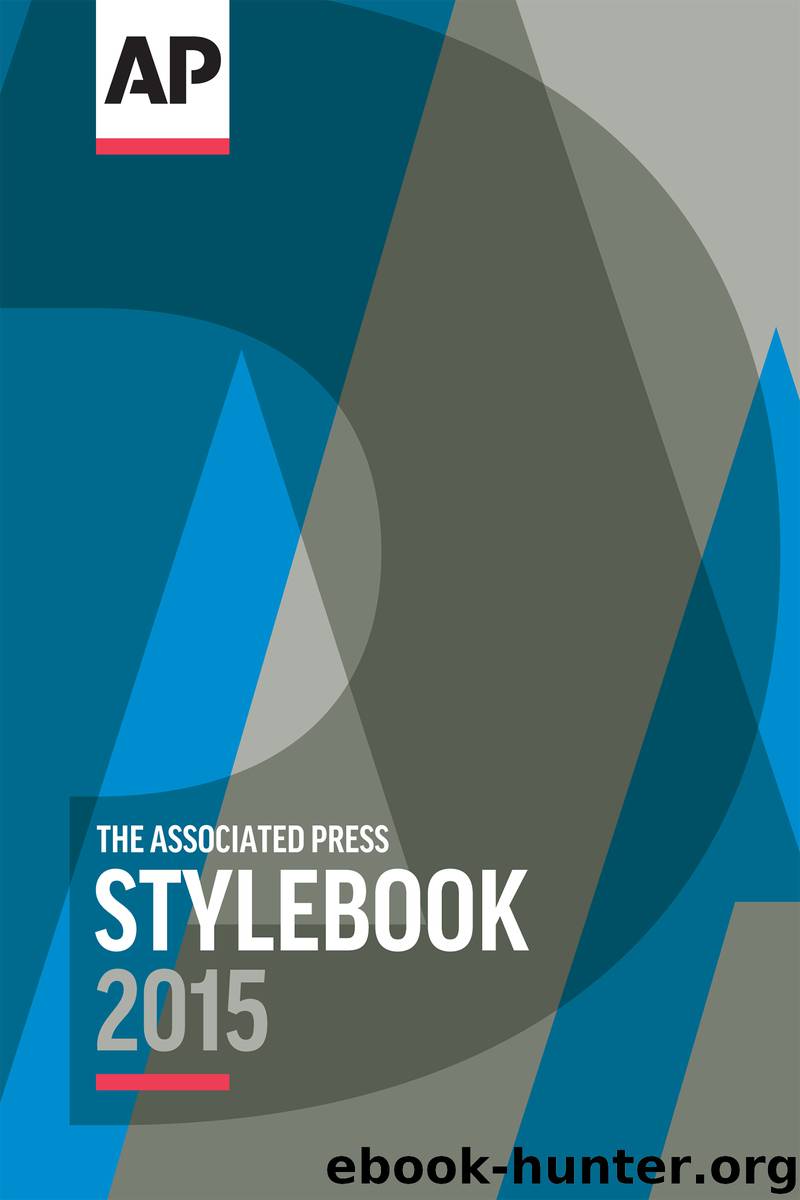The Associated Press Stylebook 2015 by The Associated Press

Author:The Associated Press
Language: eng
Format: epub
Publisher: Basic Books
Published: 2015-08-19T08:49:00+00:00
semicolon (;) In general, use the semicolon to indicate a greater separation of thought and information than a comma can convey but less than the separation that a period implies.
The basic guidelines:
TO CLARIFY A SERIES: Use semicolons to separate elements of a series when the items in the series are long or when individual segments contain material that also must be set off by commas:
He is survived by a son, John Smith, of Chicago; three daughters, Jane Smith, of Wichita, Kansas, Mary Smith, of Denver, and Susan, of Boston; and a sister, Martha, of Omaha, Nebraska.
Note that the semicolon is used before the final and in such a series.
Another application of this principle may be seen in the cross-references at the end of entries in this book. Because some entries themselves have a comma, a semicolon is used to separate references to multiple entries, as in: See the felony, misdemeanor entry; pardon, parole, probation; and prison, jail.
See dash for a different type of connection that uses dashes to avoid multiple commas.
TO LINK INDEPENDENT CLAUSES: Use semicolon when a coordinating conjunction such as and, but or for is not present: The package was due last week; it arrived today.
If a coordinating conjunction is present, use a semicolon before it only if extensive punctuation also is required in one or more of the individual clauses: They pulled their boats from the water, sandbagged the retaining walls, and boarded up the windows; but even with these precautions, the island was hard-hit by the hurricane.
Unless a particular literary effect is desired, however, the better approach in these circumstances is to break the independent clauses into separate sentences.
PLACEMENT WITH QUOTES: Place semicolons outside quotation marks.
Download
This site does not store any files on its server. We only index and link to content provided by other sites. Please contact the content providers to delete copyright contents if any and email us, we'll remove relevant links or contents immediately.
Asking the Right Questions: A Guide to Critical Thinking by M. Neil Browne & Stuart M. Keeley(5632)
Autoboyography by Christina Lauren(5183)
Eat That Frog! by Brian Tracy(4433)
Dialogue by Robert McKee(4321)
Sticky Fingers by Joe Hagan(4100)
Journeys Out of the Body by Robert Monroe(3570)
Annapurna by Maurice Herzog(3423)
Full Circle by Michael Palin(3382)
Schaum's Quick Guide to Writing Great Short Stories by Margaret Lucke(3318)
Elements of Style 2017 by Richard De A'Morelli(3306)
The Art of Dramatic Writing: Its Basis in the Creative Interpretation of Human Motives by Egri Lajos(3015)
Atlas Obscura by Joshua Foer(2898)
The Diviners by Libba Bray(2885)
In Patagonia by Bruce Chatwin(2875)
Why I Write by George Orwell(2874)
The Fight by Norman Mailer(2848)
The Mental Game of Writing: How to Overcome Obstacles, Stay Creative and Productive, and Free Your Mind for Success by James Scott Bell(2844)
Venice by Jan Morris(2524)
The Elements of Style by William Strunk and E. B. White(2440)
